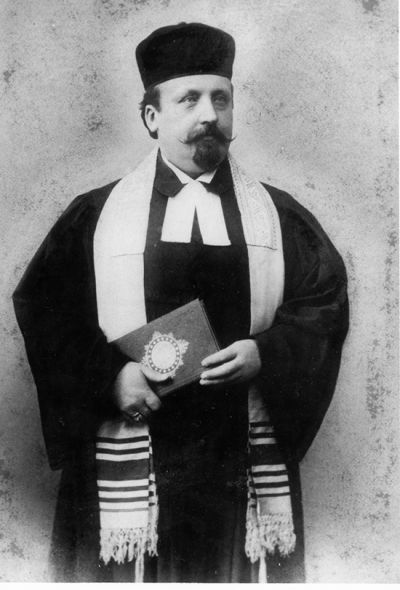The Polish-Jewish prayer house in Remscheid 1928–1933

From the start of the 1880 Jews were forced to leave their homes in Eastern Europe as a result of anti-Jewish pogroms and increasing poverty. Their main destination was the USA, and for many of them Germany was simply a transit country. Nonetheless around 70,000 Jews from Eastern Europe had decided to settle in the German Reich by 1910. When the battles in the First World War raged, particularly in traditional Jewish areas in Poland, many people fled from the conflicts, were captured and enlisted by the German forces to work in industries that were vital for the war effort. At the end of the war the majority of the old Jewish areas were returned to the Polish State when the borders were redrawn once more. But when the laws and regulations issued by the Polish government made it difficult for Jews to take part in business activities and find a job in state services, this set off another wave of emigration. By 1933 a further ca. 88,000 Jews from Eastern Europe had settled in the German Reich.[2]
At the start of the 20th century Remscheid was an attractive place for Eastern European Jewish families to emigrate. Many orthodox families rejected the assimilated services in the long-standing Jewish congregations and initially gathered for services in prayer rooms in private houses. But as more and more Jews moved into the country the prayer rooms became too small to accommodate them and during the Weimar Republic a society named “Beth HaMidrasch” (Learning and Prayer House) was set up. In 1928 it succeeded in renting a small house in the courtyard of its own “People’s House” at 59/61 Bismarckstraße and, as was reported in the “Israelite Family Sheet”, set it up “with great and willing sacrifice which tested the congregation’s financial powers to the limit.”. One of their members, Heinrich Mandelbaum, painted the interior of the prayer house with traditional folkloric motifs that he knew from the small wooden synagogues back in Poland. Many of these motifs and quotations were widespread in the century-old country synagogues in Poland.[3] Heinrich Mandelbaum, who was born in 1881 in Slomniki[4] in the part of Poland that had been annexed by the Russians, had arrived with his family in Remscheid in 1914.[5]
[2] Maurer, Ostjuden, pp. 46-81. Numbers, p. 72. Backhaus, Gruppe der Ostjuden pp. 177-180.
[3] For the images in Polish rural synagogues see: Grunwald, Beschreibung der Malereien, and the same, Ikonographie.
[4] On the Jewish community in Slomniki see: Świętokrzyski Sztetl Ośrodek Edukacyjno-Muzealny at: http://swietokrzyskisztetl.pl/asp/en_start.asp?typ=14&menu=248&sub=173#strona
[5] Letter from Shlomo Shaked (Felix Mandelbaum) dated 4. March 1993 (Private ownership J. Bilstein, Remscheid). Bilstein, Ostjuden in Remscheid. And Ostjüdische Volkskunst. Pracht-Jörns, Remscheid, pp. 256-257.


![South wall on the left with illustrations of the Mishneh tractate ‘Pirkei Avot’ [Chapters of the Fathers] South wall on the left with illustrations of the Mishneh tractate ‘Pirkei Avot’ [Chapters of the Fathers] - In: „Aus alter und neuer Zeit“.](/sites/default/files/styles/width_100_tiles/public/assets/images/suedwand_links.jpg?itok=2lMG07mE)







